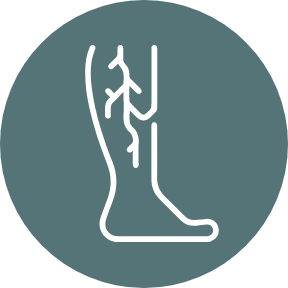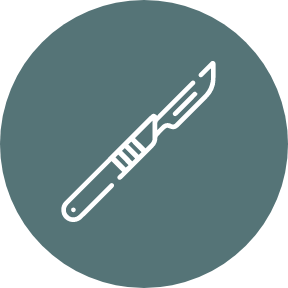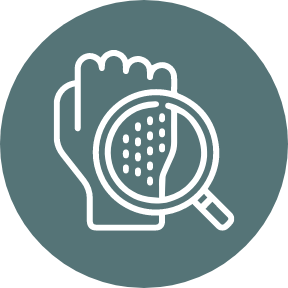VeinStream
Welcome to the website of the
largest varicose vein centre in South-Hungary!
The VeinStream varicose vein clinic has been welcoming patients since 2017 in the centre of Szeged in an exclusive environment with a professional attitude. Its founder, Dr. Róbert Sipka, former head of unit at the Unit of Vascular Surgery, who started treating patients suffering from varicosities with the most modern technologies with several decades of experience. Over the years a team has formed, and currently five vascular surgeons and vein specialists run the largest varicose vein centre in the region, where thousands of doctor-patient meetings and hundreds of modern catheter-based procedures take place each year. Some people see private healthcare as a profit-oriented branch of medicine, but in our case, practice reshapes this image. With highly trained and motivated colleagues and state-of-the-art technological equipment, we can create an environment and atmosphere in which we can get much closer to the desired quality of treatment where we can devote the right amount and quality of time and attention to the patient, whose illness we don’t just have to treat in a hurry, but with whom we can develop a real doctor-patient relationship of trust. For us, this is the most motivating aspect of our work at the VeinStream Clinic.
On varicose veins in general
Veins are there in every person’s body. The veins of the leg are vessels leading back to the heart, and are important parts of circulation. By varicose veins, however we mean a condition when the veins do not work properly and may cause complaints or complications. Normally, the veins of the legs lead the venous blood towards the heart with the help of valves in them, but in the case of varicose veins, due to errors in the valves that control the direction of the blood flow, the direction of the blood flow reverses, the blood flows backwards in the vessel, or congests.
Risk factors for varicose veins:
- family history
- smoking
- pregnancy
- obesity, overweight
- standing or sitting at work
- leg injury, accident
- deep vein thrombosis
If veins are already dilated, the complaints may range from mild or minor aesthetic complaints to even inflammation, deep vein thrombosis, ulcers or bleeding.
Varicose vein complaints, complications:
- visible, engorged veins on legs, aesthetic complaints
- heaviness, fatigue of the leg
- leg swelling (socks or tights may leave marks at the end of the day)
- leg cramps during the night
- dull pain in the leg
- itching
- non-healing ulcers
- recurrent phlebitis and thrombosis
- bleeding
Early detection is important!
Without treatment varicose veins may result in serious complications, such as deep vein thrombosis, venous ulcers or phlebitis, therefore, early detection is crucial. With the examination, it is possible to assess how much chance someone has of developing such complications, and it is also possible to find out what may be done in case of complaints, complications. At the VeinsStream varicose vein clinic, we use high-performance ultrasound machines and other special devices (VeinLite, VeinViewer, etc.) in order to create an accurate map of lesions on the legs.
More than 80% of leg ulcers develop due to varicosity.
Modern varicose vein operations
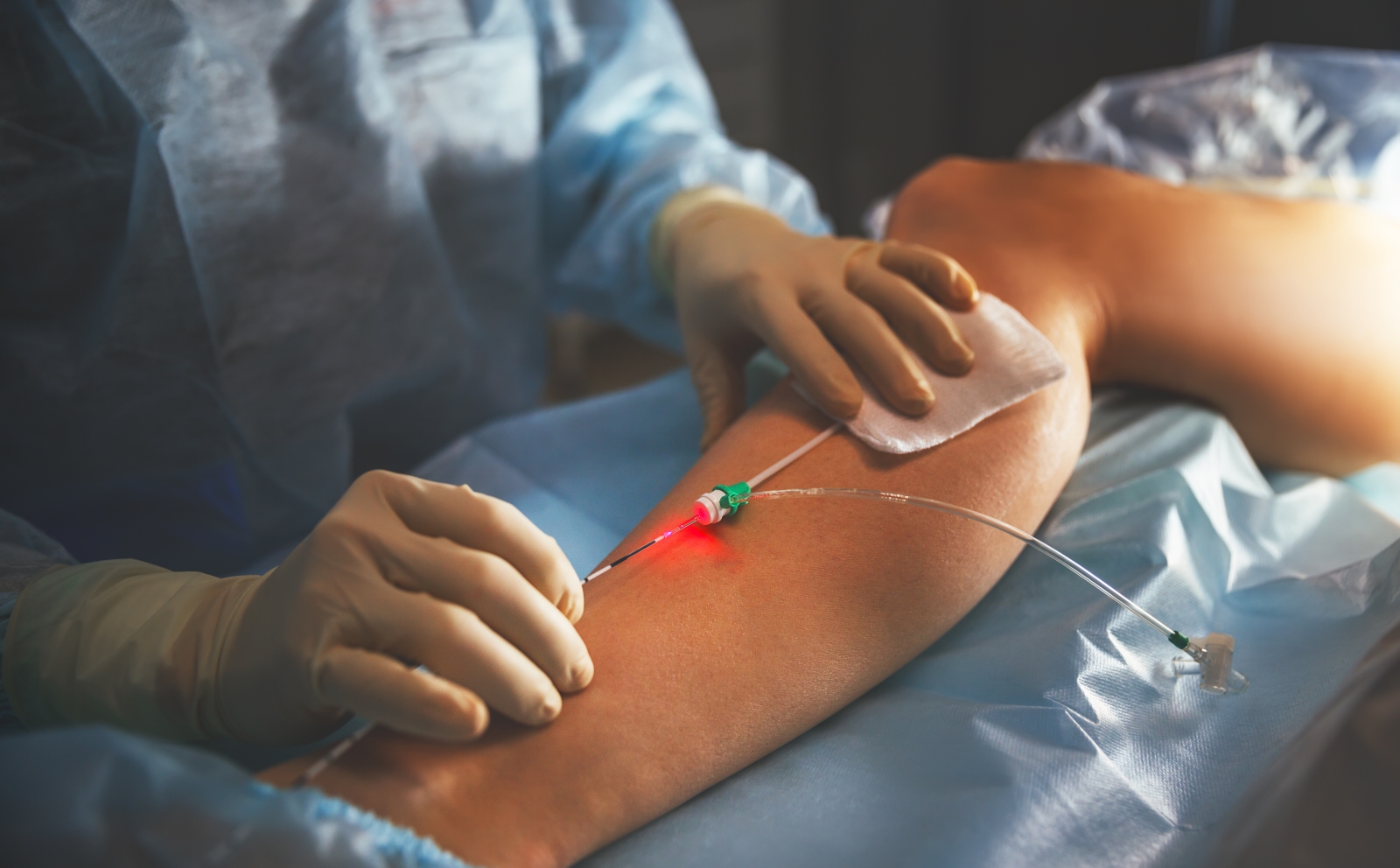
Almost all types of already developed varicose veins can be treated. Of course, spider veins that are thinner than a millimetre and a large vein dilatation that may reach several centimetres fall under different assessment, which is why we discuss these separately. Many times they appear in a mixed manner, in which cases the individual treatment plan includes planning the treatment of both small and large varicose veins.
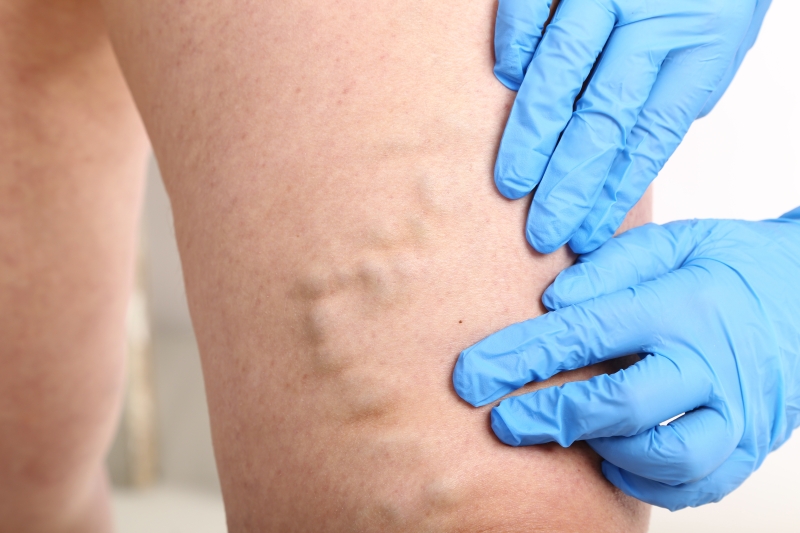
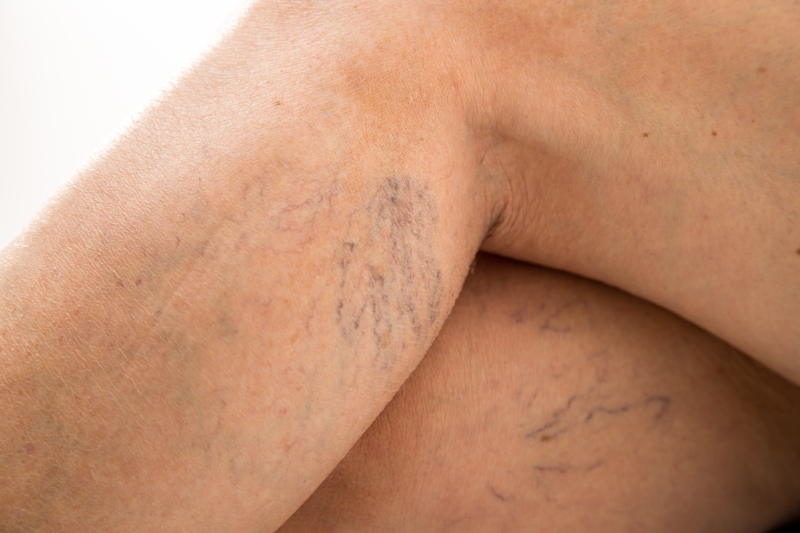
Treatment of large vein dilatation:
There are basically two ways to treat varicose veins, conservative treatment, which is a combination of compression stockings, lifestyle advice and nutraceuticals, and a wide range of surgical solutions from traditional surgery to the latest glue treatment.
Since venous dilatation is not a directly life-threatening disease, surgical intervention is not mandatory for all patients, this needs to be considered individually. Certain patients feel adequate relief in their complaints by wearing properly selected compression stockings and medication. This, however, is a life-long, daily task. Only the surgical solution means recovery.
- conservative treatment
- medication using so-called venotonic drugs to reduce complaints of varicose veins
- topical therapy, using varicose vein creams
- wearing compression stockings
- treatment of complications
- surgical solutions
- traditional – varicose vein stripping, removal of the main varicose vein
- radiofrequency or laser ablation
- glue treatment
- foam sclerotherapy
- combined treatments
The aim of all surgical procedures is to eliminate the engorged part of the vein which causes complaints and has become unnecessary and harmful. In the case of traditional varicose vein stripping, this is done by the removal of the vein, whereas in the case of catheter-based and cyro-sclerotherapy methods, the vein is sealed.
Traditional vein stripping also cures varicosities by removing the vein dilatation. This operation is performed under general anaesthesia or spinal anesthesia, with hospitalization. As stripping surgeries involve larger incisions, they mean stronger pain and longer recovery time.
Modern catheter interventions cure varicosities by venous closure instead of removing them, and are performed as outpatient care. Closure may be achieved by heat or gluing.
Besides traditional surgery, other options are also available, in which our colleagues have extensive experience. The information below will help you navigate between the different methods.
+++a lot/significant 0 none/minimal
|
|
glue treatment |
RF /laser |
traditional |
|
pain |
+ |
++ |
+++++ |
|
numbness |
0 |
+ |
++++ |
|
use of roll bandage |
0 |
+ |
+++++ |
|
length of reduced physical activity |
0 |
+ |
+++++ |
|
sum of all days on sick leave |
0-1 |
+ |
+++++ |
| sum of all days | 0- 1 | 7-14 days | 6 weeks |
Treatment options and prices in the case of large varicose veins:
The common feature of all catheter-based methods is that the dilated venous segment is sealed with the help of a catheter. The sealing may be done in a chemical way (glue treatment, cyro-sclerotherapy) or by using heat.
- VenaSeal glue treatment
- Description: when performing glue treatment, we use the latest VenaSeal special glue manufactured in Germany. The procedure involves the delivery of a small amount of specially formulated medical glue into the diseased vein in order to seal it. The glue seals the vein and ends the congestion of the leg’s venous network, therefore reduces the complaints.
- Prices: please ask our colleagues for our current prices
- Radiofrequency ablation and laser ablation
- Description: among treatments done by using heat, the most important ones are laser and radiofrequency ablation. The difference between them is that one uses a radiofrequency generator, while the other creates the necessary heat with the help of laser light. The heat seals the veins, which ends the congestion of the leg’s venous network, therefore reduces the complaints. Experience shows that in most cases radiofrequency ablation is suggested to patients, as the heat of laser ablation is often too high to treat the veins causing more pain and resulting in a longer recovery period.
- Prices: please ask our colleagues for our current prices
- Foam sclerotherapy
- Description: during foam sclerotherapy, based on professional considerations, while ensuring external cooling a special foam is injected into the varicose veins designated by the treating physician. This foamed material damages the wall of the vein, which results in its bonding. This ends the congestion of the leg’s venous network, therefore reduces the complaints. The procedure may be comprehensive, which means that foam sclerotherapy in itself may solve the problem of the varicose veins, or it can complement other catheter-based interventions, which your treating physician will suggest when putting together your treatment plan. In certain cases, foam sclerotherapy can be a good solution for the treatment of spider veins, about which your treating physician will also inform you.
- Prices: please ask our colleagues for our current prices
Treatment options and prices in the case of spider veins
For the most part, small vein dilatations have a genetic background, namely, the majority of our patients tell us that their parents and grandparents had similar alterations. Spider veins do not carry health risks, in other words, they do not lead to thrombosis or ulcers, and usually do not get inflamed, however, they might become disturbing as they grow and cover greater areas throughout the years.
The aim of their treatment is to abolish these varicosities. The closure of the dilated veins may be done by administering a special chemical compound (polidocanol, fibrovein …etc) or by using heat (radiofrequency, laser).
Small vessels are absorbed after their closure and are replaced by connective tissue invisible to the eye.
- Injection sclerotherapy
- Description: a method applicable to treat spider veins, small, superficial veins with a maximum diameter of 6 mm. During injection, the solution is administered undiluted, diluted (or foamed), damaging the wall of the vein which results in its bonding. Wearing a roll bandage is necessary after the procedure, and avoidance of UV radiation (solarium, sunbathing) is recommended.
- Prices: please ask our colleagues for our current prices
- Alma laser therapy
- Description: the leading laser device manufacturer of the world developed its device to treat smaller veins that are a few millimetres in diameter. The device operates with a specific external cooling mechanism which significantly decreases the pain and discomfort felt throughout the procedure. During the first meeting of the multi-step treatment we do a laser test, with which we can determine how your skin will react to the laser. Following the treatment avoidance of sunbathing and UV radiation is recommended. After the procedure a specific gel must be used which facilitates the absorption of the treated vessels and the recovery of the affected area.
- Prices: please ask our colleagues for our current prices
- Foam sclerotherapy
- Description: during foam sclerotherapy, based on professional considerations, while ensuring external cooling a special foam is injected into the varicose veins designated by the treating physician. This foamed material damages the wall of the vein, which results in its bonding. This ends the congestion of the leg’s venous network, therefore reduces the complaints. The procedure may be comprehensive, which means that foam sclerotherapy in itself may solve the problem of the varicose veins, or it can complement other catheter-based interventions, which your treating physician will suggest when putting together your treatment plan. In certain cases, foam sclerotherapy can be a good solution for the treatment of spider veins, about which your treating physician will also inform you.
- Prices: please ask our colleagues for our current prices
Screening for atherosclerosis
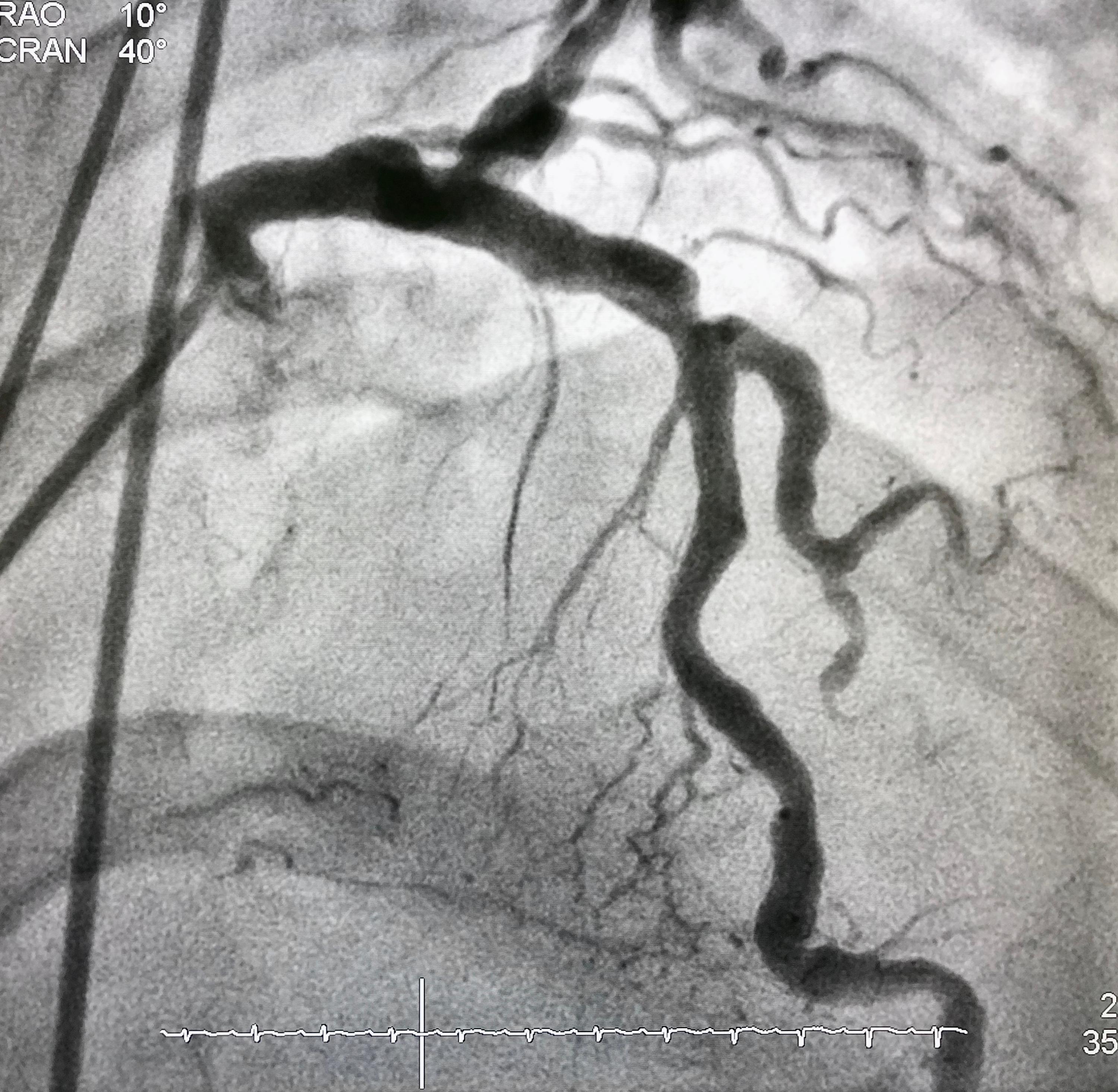
On arterial diseases
Arteries provide the route for blood that is freshly saturated with oxygen in the lungs towards the organs and tissues. Their narrowing or occlusion may cause the damage or death of the supplied organ, tissue, with matching symptoms. For example, narrowing, occlusion of the arteries of the neck impairs the blood flow of the brain with subsequent neurological symptoms: paralysis, speech and visual disorders, loss of sensation and movement. Disorders of lower extremity vessels, decreased blood flow to the muscles limits walking distance leading to the so-called window shopper’s disease, or gangrene in more severe cases. The most common causes of atherosclerosis are smoking, disorders of fat metabolism, inflammation, genetic factors, probably diabetes or diseases that affect blood clotting for example. The original cause cannot always be precisely identified. However, by considering the symptoms and examining the patient physically and with specific devices the damaged vascular section can be identified and the appropriate treatment can be determined.
This can be a so-called conservative therapy: taking medication, changes in lifestyle, physiotherapy perhaps, or some sort of intervention which rapidly improves circulation: surgery, catheterization. Decision on which solution should be chosen is based on the results of the investigations. Phase one, physical and instrumental diagnostics, doppler, colour duplex ultrasound, flowmetry and tissue oxygenation measurements might necessarily be followed by more complex imaging, for example angiography, CT or MRI in order to make the right decision. These examinations, however, are provided through social insurance-funded public healthcare in Hungary, similarly to the surgical and catheter-based interventions. At this point we can assist Hungarian citizens in patient management. For foreign citizens, fees have to be paid. Our vascular surgeon colleagues can help directly in an official way in an appropriate facility.
The other group of arterial diseases also originates in vascular wall lesion, but instead of narrowing, they are characterized by dilatation. This is what we call an aneurysm. In this case, decreasing blood flow is not the primary source of danger or problem, but rupture and subsequent bleeding. By all means, even in this case a blood clot, occlusion may develop due to the change in the nature of circulation. This may lead to symptoms identical to atherosclerosis. Investigation and treatment of aneurysms may be done in the order of the steps above.
In case of suspicion of atherosclerosis/aneurysm, or in case of concerns due to similar illness running through the family, do not hesitate to contact us. Our specialists will do their best to protect and restore your health.
Book an appointment
- To book an appointment, call +36708844827 or send an e-mail to info@veinstream.hu . Address: 6721 Szeged, Tábor utca 6/B.
- For patients from Romania, our partner provides assistance in booking appointments, travel and interpretation in Romanian.
